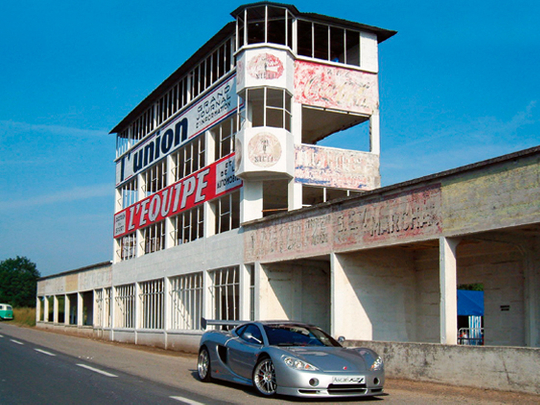
Reims was built for one purpose, speed, and then later redesigned to make it even faster. It etches a place in our minds and hearts for that reason alone. Fast, narrow and dangerous, it was the classic road course. That it hosted 14 French Grands Prix goes to show that it was one of the most popular tracks around.
Back in the Twenties, the Automobile Club De Champagne was responsible for organising racing events at Reims, just outside the village of Gueux. Not that it tried very hard, mind. A few bales of straw were dragged out on race day and put on the outer corners of the track — if anyone could be bothered. But, its two huge straights formed the core of its appeal and for 50 years it was home to Formula One as well as touring car action and the 12 hours de Reims endurance event. Drivers and fans alike loved the place which competed with Spa Francorchamps in Belgium for being the fastest in Europe.
It began life at 7.8km long: consisting of a triangle of public roads, it soon became known for its slipstream battles while its long back straight rivalled the Mulsanne at Le Mans.
François Lescot was the first man to take to the podium after winning the Grand Prix de la Marne in a Bugatti in 1926. During the Thirties, permanent structures were erected including a three-tier grandstand and the track’s popularity began to soar. But the outbreak of war put paid to the racing action. However, it wasn’t long before teams, cars, drivers and spectators were back with the first event being the Grand Prix de Reims in 1947, which Christian Kautz won driving a Maserati.
International racing soon followed with the Formula 1 World Championship beginning in 1950 and there was only ever going to be one place to host the French GP. Juan Manuel Fangio, driving an Alfa Romeo, secured the victory and he repeated the feat the following year. He won four races in total during Reims heyday in the Fifties and Sixties and set the fastest lap record of the original circuit; 2:25.7.
Jack Brabham was the last man to win a Formula 1 race there in 1966 in his Cooper Climax and soon after the place went into decline and all racing came to a halt by 1969. Safety and security were the main reasons cited, not to mention political and financial issues that began to cloud the future of the legendary track.
It fell into disrepair and began to crumble though the grandstand and pits just about remained, while parts of the circuit were used as public roads.
But thanks to the Amis Du Circuit De Gueux (ACG) a team of volunteers, they are slowly bringing Reims back to life. All the old advertisements on the imposing buildings have been re-painted giving the place a wonderfully retro feel while the occasional classic car rally is staged there. It’s still an awe-inspiring place and a genuine temple of speed.


